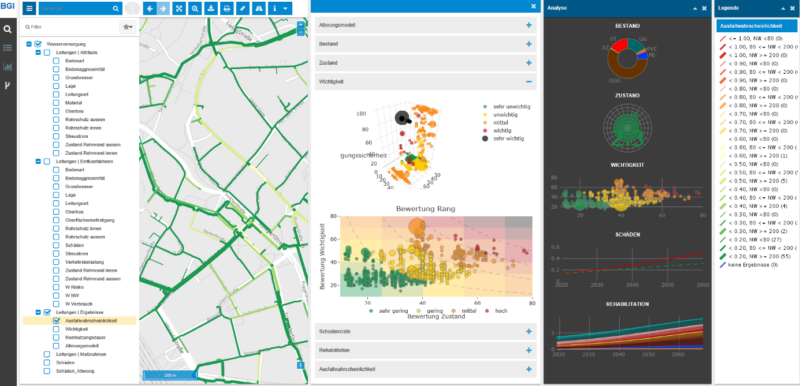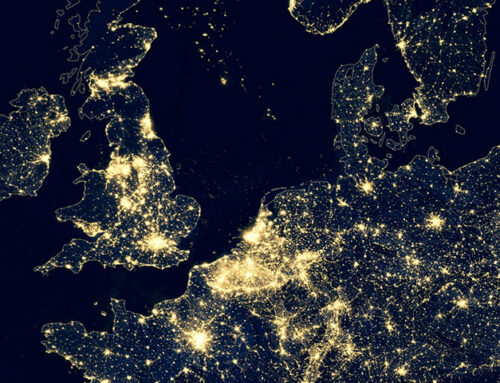Fichtner Digital Grid
Digital Twin of the Distribution Grid
Today’s challenges for grid management, like the expansion of renewable energies, the requirements stemming from growing electromobility, the (over)aging of assets, and efficiency standards imposed by regulatory authorities, can increasingly only be mastered using a reliable, up-to-date and digital information basis. More and more decisions have to be taken and they are becoming increasingly complex, while the timeframes are also getting tighter. Digitalization of the distribution grids and the grid operator’s interactions with many new players increase the pressure even more.
Anyone not taking advantage of the opportunities offered by digitalization is wasting optimization potential
A similar level of transparency will therefore soon be required at the distribution grid level as we have today at higher grid levels, since the energy transition will also increasingly take place in the distribution grid in future.
New digital processes have to be put in place for maintaining data quality, for grid visualization and for calculations as well as for regulatory and asset management, while at the same time increasingly large data volumes have to be processed efficiently. The IT infrastructures of many grid operators are limited in their ability to handle these tasks, as they usually consist of a number of proprietary stand-alone solutions, thus the strain on them is growing.

Fichtner Digital Grid provides knowledge and information on the grid
Information is needed to minimize that strain, and that information should no longer just be hidden away in the technical departments. It must be brought to the surface – and this is what the Fichtner Digital Grid solution portfolio does. It draws information from systems such as the asset database, the GIS, the control center and others, and consolidates it into one platform that is, in principle, accessible to all employees. This creates a digital image of the grid, what you might call a digital twin.

Analysis, visualization and integrated process support in the user interface of the Fichtner Digital Grid solution portfolio (image: FIT, HERE)
In addition to serving as a reliable information platform, flexible expert modules offer the right tools to optimally support recurring, specialist processes. For instance, the network calculation module enables, among other things, simple and fast functionalities for connection testing of equipment such as renewable energy installations or wallboxes. The integrated asset management module simplifies the condition assessment, risk analysis, and rehabilitation requirements of assets. The Maintain module supports maintenance processes, while the HeatPlanner module is the tool used in process support for planning a carbon-neutral heating infrastructure. Consistent use of the potential of digital transformation thus enables the provision of timely information, suitable analyses, visualizations and forecasts for different user groups in the company.
Real-time information is indispensable for a smart distribution grid
The latest module in the Fichtner Digital Grid solution portfolio is called BGI Monitor, which is fed with highly precise real-time measurements from relevant grid nodes of the cooperating company Camille Bauer. The sensor information provides users with reliable real-time data which offers, in particular, a gain in transparency and control in the distribution grid. In addition, the module now allows existing grids to be optimized more quickly and easily for the energy transition, enabling a sustainable utility supply to be achieved sooner.

Certified power quality recording and performance analysis of the smart grid solution (image: Camille Bauer) provide information about the grid that can be used to optimum effect in the Fichtner Digital Grid.
Knowing the current, voltage and voltage quality at key points in the grid provides benefits to various departments. Examples include the control center as well as grid planning and simulation, since the measurements enable more precise forecasts, such as where grid reinforcement is going to be unavoidable or which assets should be serviced or replaced due to the strain on them. The combination of Fichtner Digital Grid and Camille Bauer meters therefore offers the ideal opportunity to optimize grid operation both technically and economically. The real-time information enabled by modern technology within the Fichtner Digital Grid platform is therefore indispensable for a smart distribution grid where security of supply, optimization, sustainability and acting with foresight should be top priorities.
January 2022

Peter Brack
Program Manager
at Fichtner IT Consulting GmbH





